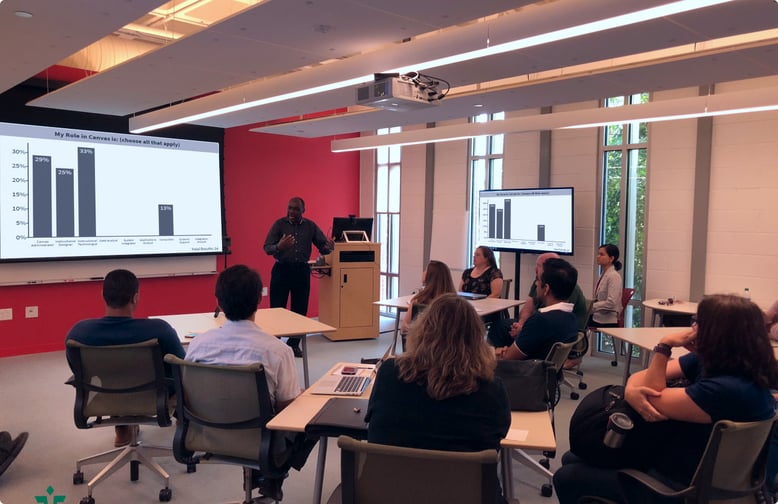Building intentional student engagement


- Location
- North Carolina
- Size
- 10,000+
- Use case
- Higher education
"The university took a strong stance and decided that Poll Everywhere needs to be an institution led, supported, and financed tool so that we can reduce the costs that students have to face for tuition, books, and technology."
The switch to Poll Everywhere
Several years ago, UNC Charlotte had been using another technology based on a physical device and seeing stagnant growth across the university. “Around that time, we had reached a point in our cycle where we reviewed our technology, and audience response software came up in that review. What brought us to Poll Everywhere was the ease of use of the technology and the fact that we had invested heavily in our Internet infrastructure and could support that kind of application.”
As part of the software review, the Center for Teaching and Learning created a “faculty advisory group, which included those who were already using the previous technology and those who were teaching larger courses. Once we targeted them, we made them part of the revision in terms of auditing each platform based on a rubric. The survey responses we collected both from them and the Student Government Association (SGA) pointed us to Poll Everywhere.”
Coordinating a rollout on a phase basis, the Poll Everywhere pilot team targeted “faculty champions” and provided them with applicable training within their large courses. Within that first year, the pilot proved very successful.
"Once we rolled out the pilot, we were able to target those faculty members and more through word of mouth. We immediately went into intensive training and workshops to advise faculty, give them ideas on how Poll Everywhere could be integrated into their in-person and online courses, and demonstrate the ease of use in terms of exporting graded responses directly to Canvas."
Eliminating barriers to entry
Another benefit Bruce hadn’t even anticipated was that internal business and administrative departments at the university saw exponentially increased usage as well. “With the previous software, they all had to buy that physical device. Now that the barrier to entry was eliminated and the university made it an institution-wide system, they began to use Poll Everywhere for their own trainings, meetings, and even conferences outside of the physical university.”
Now that significantly more instructors are incorporating Poll Everywhere into their classrooms, they’re using graded questions like multiple choice and clickable image activities. However, Bruce and team also encourage faculty to use non-graded activities as well.
"Engagement is much stronger than simply attendance. If faculty can get students to respond to an open-ended question, they’re not only paying attention, but have a deeper understanding of the material and are thinking critically."
Finding New Ways to Engage
Recently, Competitions have become more popular. “Competitions add a flavor of a gaming approach, allowing students to be more engaged with the material, as long as the faculty implements them intentionally and builds on the content they’re presenting.”
With the transition to a more hybrid model in the fall with a heavy reliance on online learning, “Poll Everywhere becomes even more relevant. How can I gauge where students are when they’re just a name or a box on my screen? If I can provide the Poll Everywhere link, I can grab the snapshot in the same way as if I were in a physical classroom.”
Bruce’s advice for other instructional technologists or designers is to find faculty champions to partner with and “let them be part of the conversation, the revision, and the implementation.” Then, “provide training, not so much centered on how to use the technology, but how to integrate it in a pedagogical manner to support teaching and the learning in the classroom. Make sure that as you’re using it in class, students see that there is a reason for it. In other words, it’s not a standalone assessment. Instead, these questions are built on the lecture and invite students to create original thought. From there, you can go deeper and produce a full-blown assignment. Build it in as part of your learning sequence.”
Poll Everywhere for universities
Create an interactive classroom experience and spark conversations that matter.